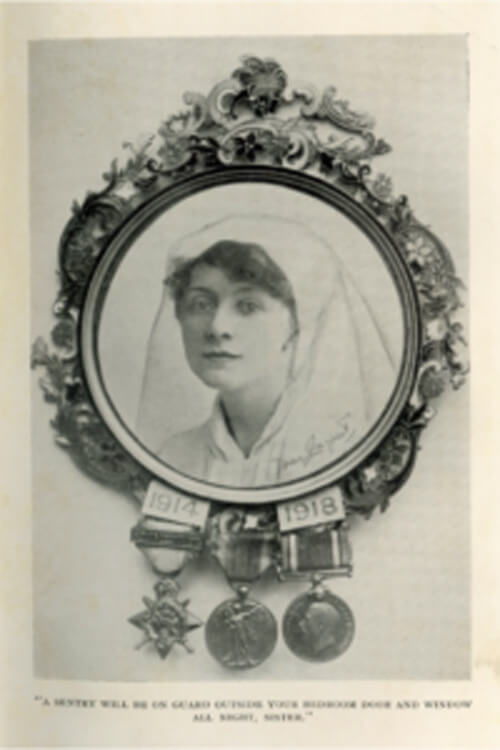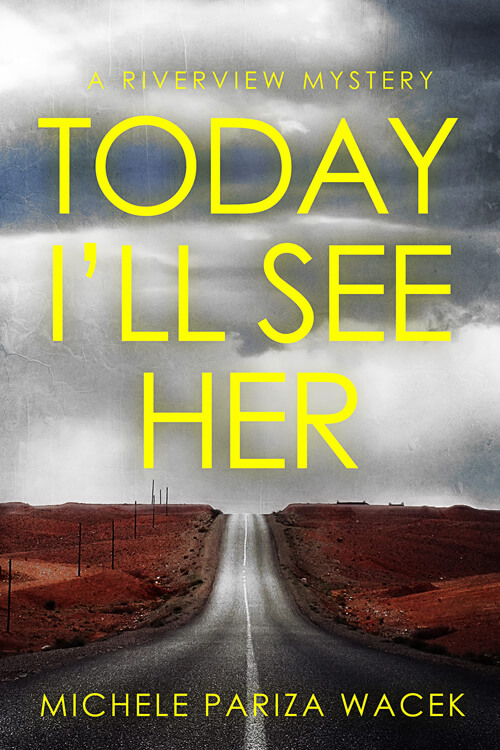
Joan Conquest
Miss Conquest is a fully qualified nursing sister, a Ju-jitsu practitioner, and a crack revolver shot. She can ride, drive anything on wheels or legs, swim, fence, fly and climb.
Joan Conquest (1883-1941) was an adventurous character who possessed courage in abundance. She was a frontline nurse during the First World War and a best-selling novelist afterward. Yet, aside from brief biographies on science fiction fan sites, she is forgotten today.
Mary Gripper: my sixteen-inch waist
Born Mary Gripper in 1883, she grew up in middle-class comfort in suburban south-west London, and received a liberal education, first in London then Paris, before being sent to Italy with a chaperone to learn the language.
The days were passed in a whirlwind of improving visits to historical sites and art galleries. Evenings began with a battle with the laces of her corsets, as she fought to achieve a fashionable hour-glass figure. Night-time meant a ball in a grand palace where Gripper danced in some discomfort (‘every movement of the Blue Danube felt like a saw [was] sawing through my sixteen-inch waist’) with eligible bachelors from Europe’s social elite. There was a moonlit picnic on Mount Vesuvius and secret trysts with ardent ‘fiancés’ in out-of-the-way locations.
Then one afternoon, during a skiing trip, she witnessed a medical emergency on the slopes. For the first time, Gripper appreciated how few practical skills she possessed as a leisured English gentlewoman. She resolved to return to London and train as a nurse.
Sister Martin-Nicholson: a sad stream of battered men
On completing her studies, Mary Gripper married a struggling actor. The marriage did not last, but Gripper kept her husband’s surname of Martin-Nicholson. Immediately after war was declared on Germany in August 1914, Sister Martin-Nicholson joined the Red Cross.
She arrived in Brussels as 50,000 German troops marched into the city. Martin-Nicholson’s knowledge of German and French meant she could be both a nurse and interpreter for the occupying forces. She remained in Belgium, initially caring for wounded Allied soldiers then afterwards nursing German officers.
When all enemy personnel were ordered out of Brussels, Martin-Nicholson found herself on the move across a battle-scarred continent, a series of journeys she described in My Experience on Three Fronts (1916), recounting her frontline work attending to ‘a sad stream of battered men’ in overstretched, under-resourced field hospitals in Russia, Poland, and France.
Mary Cooke: the world’s greatest woman traveler
By 1916, she had returned to London. Recently remarried, she had taken her second husband’s name. Mr and Mrs Cooke rented a flat in a West End mansion block and Mary Cooke embarked upon a new venture, writing romantic novels. Leonie of the Desert (1921) was an immediate success, selling tens of thousands of copies.
Other stirring yarns followed, including The Hawk of Egypt (1922), Zarah the Cruel (1923), The Light in the Harem Window (1927), and An Eastern Lover (1928). All these titles appeared under the pen name Joan Conquest. In their vivid descriptions of far-flung locations, they evidenced her growing reputation as ‘the world’s greatest woman traveler’.
By the late 1930s, Conquest had covered almost the entire globe, including time spent in Egypt, Brazil, Japan, India, and South Africa. She deliberately traveled alone to enjoy interacting with local men and women of all classes and ethnicities. This bold approach invited adventure, which suited our subject. If she ran out of money, Conquest simply worked her passage to her next destination.
To protect herself from physical harm, she carried both a revolver and ‘woman’s best weapon’ (a quantity of pepper held in a wrap of paper that might be undone and hurled towards the face of an attacker). She still found herself in tight corners on numerous occasions. She was held up by bandits. Attacked by armed robbers. Shot at by pirates. Conquest viewed these incidents as part and parcel of a life lived at liberty, and freedom mattered greatly to her.
Joan Conquest: shocking revelations about the slums
Conquest remained unaffiliated to any political faction or grouping. But this did not mean she was apolitical. In 1933, Conquest completed an exposé of the living conditions of the poor in London. Subtitled ‘Shocking revelations about the slums’ The Naked Truth detailed the micro-impacts of poor housing through testimony gathered during a series of undercover visits to slum dwellings in the city. Conquest anticipated that this hard-hitting account would force those in power to implement change. She visited Cardiff, Glasgow, and Newcastle to draw attention to her findings.
Conquest also carried out a one-woman protest at St Paul’s Cathedral in London. Dressed in navy blue and wearing a large hat, she joined the congregation one Sunday. Partway through afternoon service, she interrupted the sermon and loudly denounced the hypocrisy that allowed the church to profit as landlords from slum rental incomes whilst preaching charitable principles. At the end of this direct action, Joan Conquest hurled a copy of The Naked Truth at the pulpit and left the cathedral.
Conclusion
Joan Conquest was a best-selling author. Her 1927 novel Forbidden was dedicated to the celebrated film star Rudolph Valentino who had asked permission to play the main character. Many of her titles went through multiple reprints and some are still available as e-books. Yet she is chiefly remembered only on science fiction fan sites, thanks to her foray into futuristic works such as The Reckoning (1931) with its then-novel concepts of sperm donation and artificial insemination.
The disparate threads of Conquest’s unconventional biography – socialite, nurse, adventuress, novelist, activist – have never been pulled together. In part, this is because three name changes and the use of a pen name make it difficult to track her life and achievements. It is also because she was a complex character whose words and actions cannot comfortably be accommodated within wider historical narratives.
Joan Conquest was a courageous adventuress who had progressive attitudes to personal relationships and carried a revolver to shoot her way out of danger; she was also a narcissistic flirt, who opposed organized feminism. Conquest was a keen traveler, at ease among other peoples and cultures; yet she reduced foreign men and women to stereotypical characters on the pages of a succession of ‘exotic’ romance novels. She grew up in middle-class comfort, surrounded by servants, and never involved herself in organized politics. But she took direct action to address the social injustices that she witnessed on her London doorstep during the hungry thirties. How do we tell so contradictory a life? The question remains, who was Joan Conquest?





